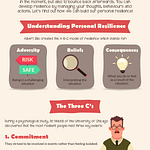Health, wellbeing and family friendly policies in the workplace will all feature as important topics at this year’s Engage for Success Conference, 22 March 2018.
‘Mental Health’, ‘Inclusion and Diversity’, ‘Health’ are all very important words, seamlessly intertwined with emails and narratives about targets… successes… pain points… drivers for change… and so on and so on. Policy and people are not always good companions. I believe the intention is honourable and proper, however, when we develop policies to support our people, do we really think about what success looks like? And, more importantly, have we done the analysis that strives for one crucial element… balance?!
I the past I have helped develop strategies to reduce costs, improve process and make the organisation more efficient, but there were so few points during that process that we gave serious consideration to things like balance or what the proposed work environment would look like for our people – did it provide a balanced environment where people could continue to work, thrive and be happy? No! It may be a task on a plan or a discussion with your team on ‘how can we get this through the top layer of leadership?’, but assessing the impacts in many cases was a chat with our EDIA or Unions reps; is that enough? No!
I am not suggesting for a second that people who make the decisions don’t care, that’s not it. But have we done enough due diligence when we think about change, develop a strategy or, as is the case in my organisation, respond with enough conviction, to the yearly staff survey; that we challenge if the value proposition of all our collective ‘health’ policies are working and create balance?
When engagement scores are low and managers and leaders can sense morale and productivity are suffering at what point, once we have poured over the balance sheets, do we look at the health and wellbeing policies and be brave and ask what else needs to change?
Maybe it is in the process by which organisations review or measure that they care about which needs to change. Looking at techniques like balanced business score card, for example, and add to the four principles (Financial, Customer, Learning and Growth and Internal Business Process) by adding ‘our wellbeing’ into the mix as an additional pillar. Let’s face it, many NGO and public sector organisations use the BBS as a way of measuring performance and monitoring what they care about strategically. The point being, that we have a duty to develop our mission balancing all the policies against the impacts of them on our people to ‘roll forward’ and test the impact of these goals and know what ‘strategic success’, or the ‘strategic end-state’, looked like.
Maybe it’s looking at the initiative style approaches we often see and take part in and be confident to challenge the short lifespans of such endeavours. We should challenge ourselves and create health and wellness as a core value. The Engage for Success mission is, I believe, an instrument that should be used at the beginning of any strategic changes or policy development. It should be used to provide measures for performance and critical success factors that challenge how our wellbeing/health policy measures have achieved or not achieved success. Being brave, admitting when it goes wrong and making the changes with ‘wellness and balance’ as a foundation pillar in building strong sustainable people orientated organisations.
Do you want to find out more about this crucial factor to achieving employee engagement?
Join us at this year’s conference where a range of speakers will be discussing this topic and sharing their own successes and challenges: www.engageforsuccess.org/2018conference
Written by:
Richard Louw, Senior Officer, Border Force and Virtual Content Team Volunteer
Would you like to join our Virtual Content Team? Email sian@engageforsuccess.org to find out more!





